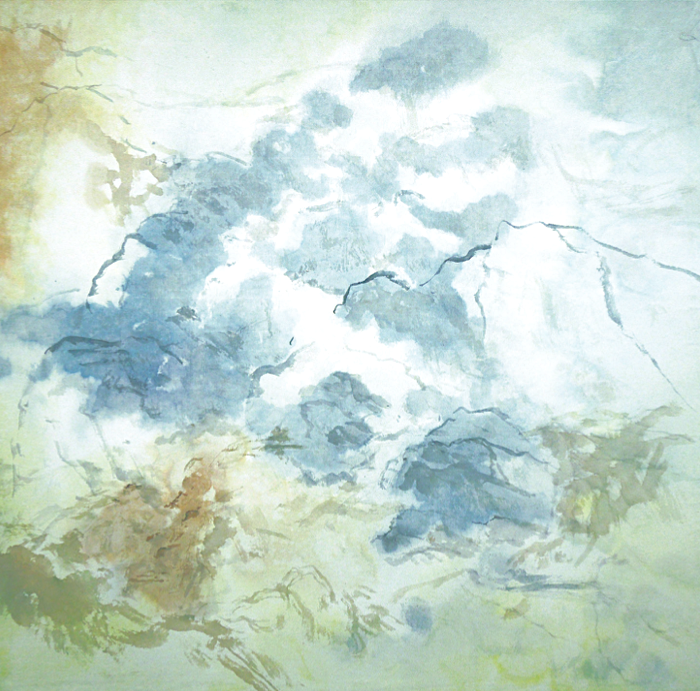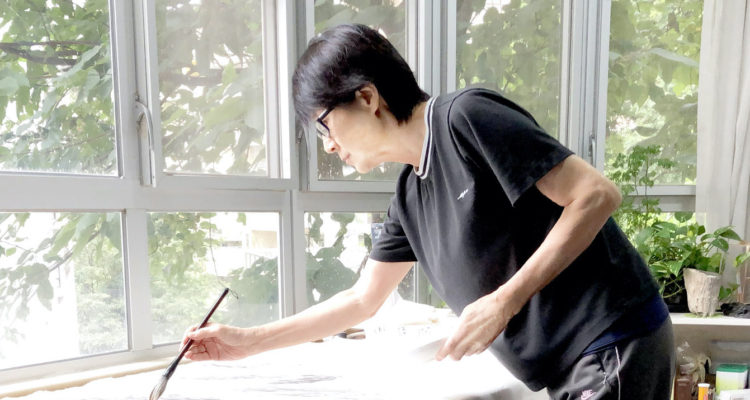“A message of inner strength.”
Paul Zimmerman in conversation with Winnie Hui
Paul Zimmerman: Tell us about your background. How did you meme interested art?
Winnie Hui: In my childhood memory, there was a cinema opposite to my home. Every Thursday I witnessed the workers changing the gigantic advertising banner for the next movie. At that time those banners were not digital print. That was an exciting moment while a huge beautiful hand-drawing painting appeared in front of me after few hours installation. This was the first inspiration that drove me start to draw.
When I grew up, visiting exhibitions and art museums are always my leisure time activities. Art is powerful! To be an artist becomes my dream. Fortunately I had an opportunity to go back to school as an art student after working for years, and gained my Master of Fine Art in 2014.
PZ: How do you find the balance between traditional and contemporary ?
WH: Traditional Chinese painting requires the ability of mastery of brush skills. Quality lines as the frame support the composition in paintings, leave the vitality by translating nature’s beauty into strokes. I always consider the traditional fine Chinese painting skills as a tool in response to contemporary issues.
PZ: How do you identify yourself as an artist? Have your practice changed over time? What is themes important part of your work?
WH: I would like to put my artwork in the category of “Contemporary Chinese Ink Painting”, with ink and color on rice paper. There is not much change in my art practice, but I am open to all forms of art.
PZ: Your paintings have a meditative quality. Is there a spiritual aspect to you work?
WH: Thousands years ago, ancient Chinese literati already had a strong intention to glorify the beauty of nature and the worth of individual soul through landscape paintings. Natural imagery has long been read as metaphor for the individual’s values and beliefs. I am always reminded by this concept during my creative process, to search for a place for spiritual sustenance in this hectic world.
PZ: How do you see the role of art in our society?
WH: Making art is an important way to learn and to understand the world. Besides, artwork provides a chance for me to wander between reality and imagination. My thoughts reflect the very soul making me to stay alive and to move on. Although individual power has its limitation, but I believe that “Good art, as words and thoughts, move everything in our society.”
PZ: Which artists are you most influenced by?
WH: J. M. W. Turner (1775-1851), Pan Tian-shou (1897-1971), Zhao Shao-an (1905-1998), Lee Ufan (1936-) and Yip Man Yam (1949-)
PZ: What are you working on now? How does the pandemic influence your work and sensibility?
WH: The coronavirus has been affecting our lives since early this year. Feeling tense and nervous, I think I need to find a way to free myself from anxiety. By borrowing the concept from ancient literati, I’d like to show calm and peace in my paintings, and to deliver a message of inner strength.

Physiognomy of Stone 4, 2012, ink and color on rice paper, 27.5” x 27.5”
